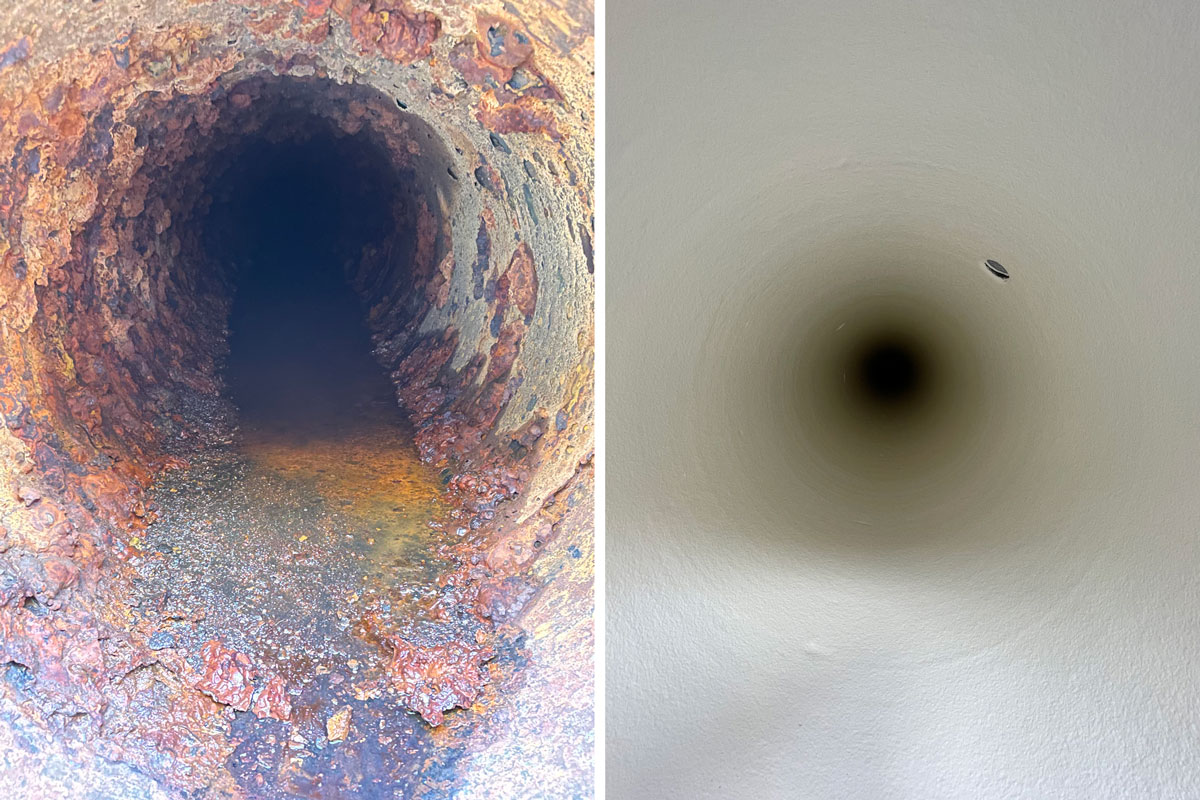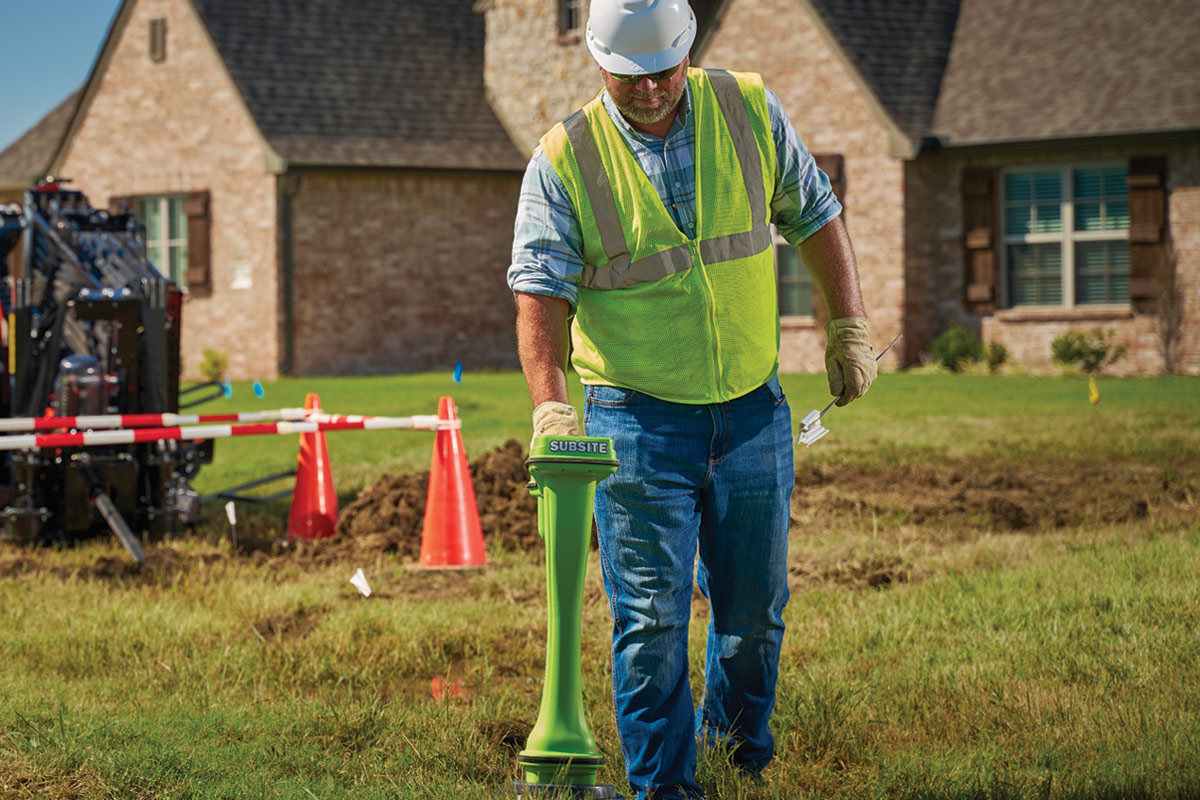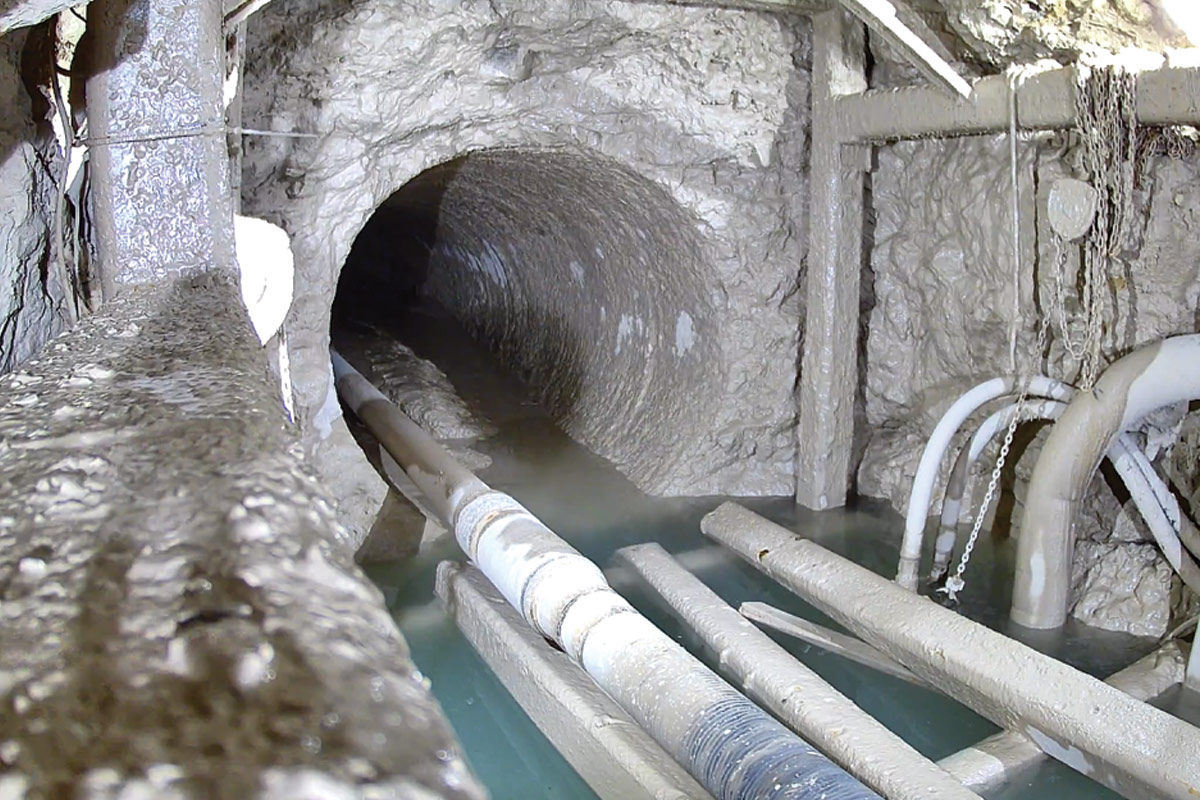
Tunneling and HDD Join Forces in El Paso, Texas
In January 2024, HDW initiated a tunneling project in El Paso, Texas, for El Paso Water. The scope involved constructing a 1,740-ft tunnel with an 84-in. diameter. Tunneling began on the launch side in February 2024, with the receiving side starting in July.
The tunnel was constructed using hand tunneling, a method where workers use pneumatic hammers — commonly known as rivet busters — to break rock. The excavated material was loaded into electric muck carts, transported back through the tunnel to the shaft, and then lifted to the surface for disposal. The launch shaft was 13 ft deep, and the receiving shaft was 16 ft deep. The tunnel passed beneath a small mountain, with depths ranging from 15 ft at its shallowest to 110 ft at its deepest.
As excavation progressed, liner plates were installed immediately to support the tunnel and protect workers from cave-ins. These plates, assembled in segments, formed a full 84-in. diameter circle. Continuous airflow was maintained to reduce dust and ensure proper oxygen circulation throughout the tunnel.
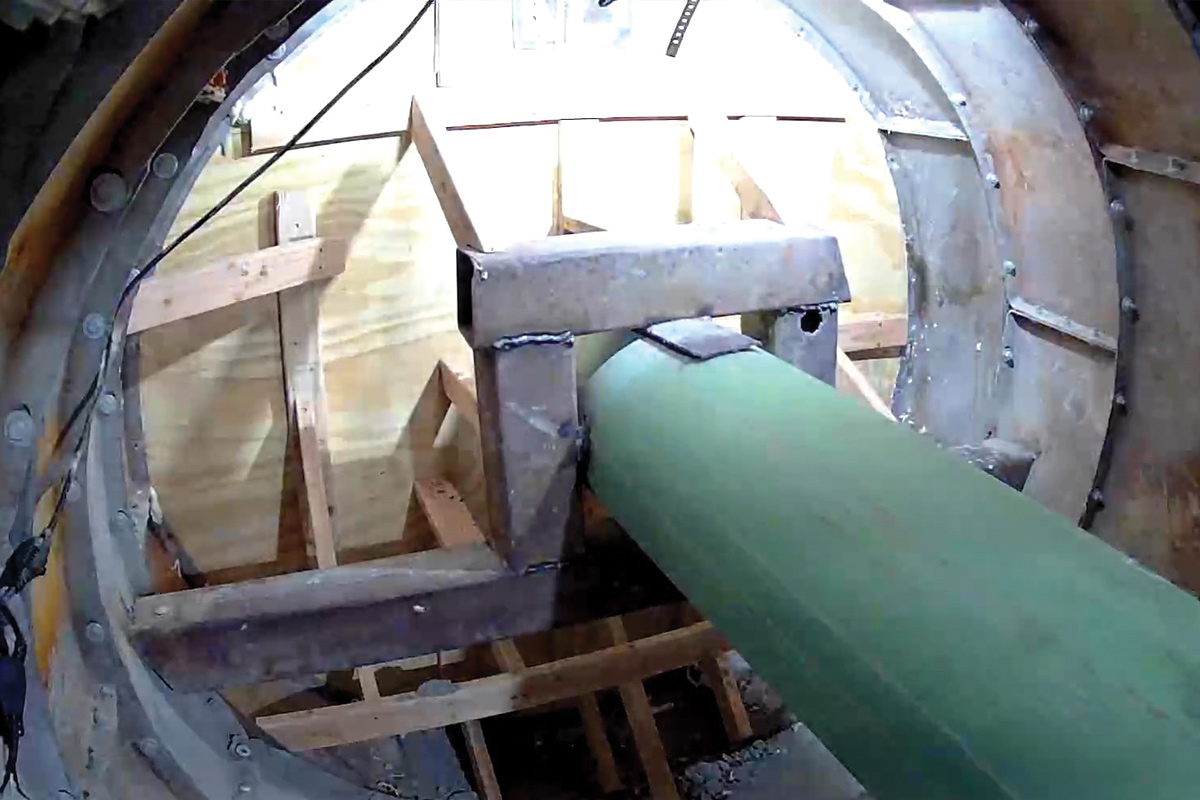
The project ran 24/7 with four rotating crews. However, as tunneling continued, the team encountered rock that was significantly harder than anticipated — far exceeding what the core samples had indicated. In August 2024, HDW was acquired by HardRock Infrastructure, and both teams collaborated to find a solution to complete the project efficiently and safely.
After multiple strategy sessions, the decision was made to combine horizontal directional drilling (HDD) with the tunneling method. This required setting up an HDD rig on the downhill side and drilling upward toward the launch shaft. The final bore needed to be enlarged to 60 in. to accommodate the force main pipe.
A Vermeer 1000/900 HDD rig was selected for its robust rotary capabilities. Setup began on January 20, 2025, on the low side. The team installed and grouted casing at the tunnel face to prevent fluid leakage and to direct return flow toward the exit shaft.
At that time, tunneling had progressed 400 ft from the receiving side and 200 ft from the launch side. Drilling began on January 24. Maintaining grade throughout the bore was critical to ensure the pilot hole intersected the tunnel at the proper location. While the HDD crew advanced the pilot, the tunneling team prepared the exit shaft.
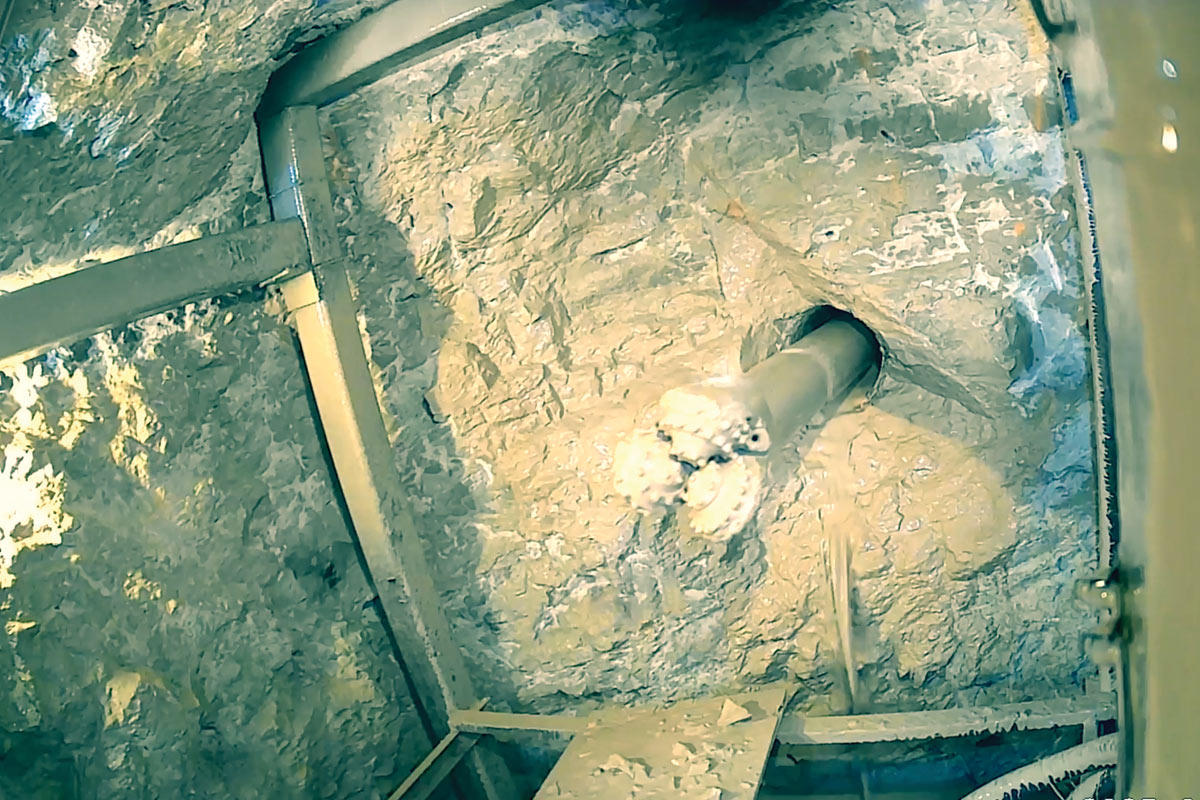
Because of the 400-ft tunnel already completed on the exit side, traditional handling of tooling and pumps was not feasible. The team engineered custom troughs to lay along the tunnel floor, enabling tools to slide through to the 60-in. hole opener. An A-frame was also constructed at the tunnel wall to support the pumps needed to return drilling fluid to the surface.
The pilot bore had to follow an upward grade with a 27-ft elevation change and successfully punched out at the precise target. The crew then pushed the Bottom Hole Assembly (BHA) to the exit shaft, where a Tong Hand was utilized to brake down the tooling and installed the first hole opener (36 in.). The assembly was then pulled back through the custom trough to the tunnel face — a process that worked smoothly with minimal complications.
Reaming operations began soon after, with fluid management emerging as a key challenge. The 400-ft return path and 13-ft vertical lift to the surface placed demands on the system. Larger return lines were installed to improve flow, enabling the pumps to operate effectively.
Three reaming passes — 36-in., 48-in. and 60-in. — were completed, each taking approximately 11 days, with downtime between for tooling changes. Each pass was pulled back to the entry casing to maintain the seal and prevent fluid loss.
After the final 60-in. ream, the HDD crew demobilized, allowing the tunneling team to return. Casing was pushed from the exit side, and the HDD casing was removed from the launch side. Tunneling then resumed on the launch end to clear the remaining face that the hole openers hadn’t broken through.
Currently, we are installing the 54-in. casing by pushing it from the launch side to the receiving side. Full project completion is expected by the end of April 2025.
This project stands out as a major success, thanks to the collaboration between teams in developing the best path forward — and the skill and execution of our field personnel in bringing those plans to life.
Cory Baker is chief operating officer at Hardrock Infrastructure.


